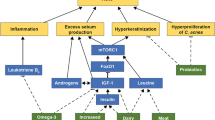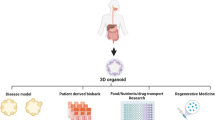Abstract
Epidemiological data have proved the association of consumption of areca nut with the causation of oral submucous fibrosis (OSF). OSF is a chronic inflammatory disease with the potential for malignant transformation from 7 to 13%. The establishment of animal models makes it easier for researchers to focus on the therapeutic options to combat this disease further. We developed and compared two areca nut extract (ANE) administration methods in Swiss albino mice to establish OSF. This study compared an invasive intrabuccal injection technique with a non-invasive intraoral droplet administration. The duration of induction was around 12 weeks. Histopathology (H&E, Masson’s trichrome staining) and gene expression analysis (COL-I, COL-II, and α-SMA) were performed using RT-PCR to confirm the OSF in animals. Our study showed that ANE administration through the intraoral droplet method exhibited significantly higher fibrosis than the intrabuccal injections, as evidenced by the H&E and Masson’s trichrome staining. Furthermore, intraoral administration of ANE significantly upregulated the mRNA expression of COL-I, COL-II, and α-SMA, as revealed by the RT-PCR analysis. The non-invasive droplet method could simulate the absorption of areca nut seen in humans through daily dosing. This study establishes the intraoral droplet method as an efficient and non-invasive method to administer the ANE to develop OSF. These findings will aid in the efficient development of OSF animal models for interventional studies, including screening novel drugs in the reversal of the OSF.





Similar content being viewed by others
References
Cox SC, Walker DM. Oral submucous fibrosiss. A review. Aust Dent J. 1996;41(5):294–9.
Ray JG, Chatterjee R, Chaudhuri K. Oral submucous fibrosis: a global challenge. Rising incidence, risk factors, management, and research priorities. Periodontol 2000. 2019;80(1):200–12.
Peng Q, Li H, Chen J, Wang Y, Tang Z. Oral submucous fibrosis in Asian countries. J Oral Pathol Med. 2020;49(4):294–304.
Maria S, Kamath VV, Satelur K, Rajkumar K. Evaluation of transforming growth factor beta1 gene in oral submucous fibrosis induced in Sprague–Dawley rats by injections of areca nut and pan masala (commercial areca nut product) extracts. J Cancer Res Ther. 2016;12(1):379–85.
IARC Working Group on the Evaluation of Carcinogenic Risks to Humans. Betel-quid and areca-nut chewing and some areca-nut derived nitrosamines. IARC Monogr Eval Carcinog Risks Hum. 2004;85:1–334.
Bari S, Metgud R, Vyas Z, Tak A. An update on studies on etiological factors, disease progression, and malignant transformation in oral submucous fibrosis. J Cancer Res Ther. 2017;13(3):399–405.
Chiang CP, Chang MC, Lee JJ, Chang JYF, Lee PH, Hahn LJ, et al. Hamsters chewing betel quid or areca nut directly show a decrease in body weight and survival rates with concomitant epithelial hyperplasia of cheek pouch. Oral Oncol. 2004;40(7):720–7.
Kheur S, Sanap A, Kharat A, Gupta AA, Raj AT, Kheur M, et al. Hypothesizing the therapeutic potential of mesenchymal stem cells in oral submucous fibrosis. Med Hypotheses. 2020;144:110204.
Sumeth Perera MW, Gunasinghe D, Perera PAJ, Ranasinghe A, Amaratunga P, Warnakulasuriya S, et al. Development of an in vivo mouse model to study oral submucous fibrosis. J Oral Pathol Med. 2007;36(5):273–80.
Chiang MH, Chen PH, Chen YK, Chen CH, Ho ML, Wang YH. Characterization of a novel dermal fibrosis model induced by areca nut extract that mimics oral submucous fibrosis. PLoS ONE. 2016;11(11):1–11.
Das T, Mahato B, Chaudhuri K. Effect of areca nut on rabbit oral mucosa: evidence of oral precancerous condition by protein expression and genotoxic analysis. Oral Sci Int. 2018;15(1):7–12.
Wen QT, Wang T, Yu DH, Wang ZR, Sun Y, Liang CW. Development of a mouse model of arecoline-induced oral mucosal fibrosis. Asian Pac J Trop Med. 2017;10(12):1177–84.
Raghavendra N, Ramanna C, Kamath VV. Effects of application of various forms of areca nut preparations in buccal mucosa of Sprague–Dawley rats with relation to the development of oral submucous fibrosis. J Adv Clin Res Insights. 2017;4(2):42–9.
Bo Y, Mengfan F. 杨博 符梦凡 唐瞻贵. 2019;260–4.
Charan J, Kantharia N. How to calculate sample size in animal studies? J Pharmacol Pharmacother. 2013;4(4):303–6.
Faul F, Erdfelder E, Lang AG, Buchner A. G*Power 3: a flexible statistical power analysis program for the social, behavioral, and biomedical sciences. Behav Res Methods. 2007;39(2):175–91.
Medical Center U. Masson trichrome stain. Univ Rochester. 2020;(Ems 15510):1–2.
Feldman AT, Wolfe D. Tissue processing and hematoxylin and eosin staining Methods. Mol Biol. 2014;1180:31–43.
Sanap A, Bhonde R, Joshi K. Conditioned medium of adipose derived mesenchymal stem cells reverse insulin resistance through downregulation of stress induced serine kinases. Eur J Pharmacol. 2020;881:173215.
Chiang MH, Lee KT, Chen CH, Chen KK, Wang YH. Photobiomodulation therapy inhibits oral submucous fibrosis in mice. Oral Dis. 2020;26(7):1474–82.
Beg MHA. Oral submucous fibrosis. Pak J Otolaryngol. 1986;2(2):68–75.
Kamath V, Rajkumar K, Kumar A. Expression of type I and type III collagens in oral submucous fibrosis: an immunohistochemical study. J Dent Res Rev. 2015;2(4):161.
Pant I, Kumar N, Khan I, Rao SG, Kondaiah P. Role of areca nut induced TGF-β and epithelial-mesenchymal interaction in the pathogenesis of oral submucous fibrosis. PLoS ONE. 2015;10(6):e0129252.
Acknowledgements
The author would like to thank Dr. D. Y. Patil Dental College and Hospital, Pune, India for funding the present study and Dr. D. Y. Patil Institute of Pharmaceutical Sciences & Research, Pune, India for their support throughout the study.
Author information
Authors and Affiliations
Corresponding author
Ethics declarations
Conflict of interest
All authors declare no conflict of interest.
Additional information
Publisher's Note
Springer Nature remains neutral with regard to jurisdictional claims in published maps and institutional affiliations.
Rights and permissions
About this article
Cite this article
Shekatkar, M., Kheur, S., Sanap, A. et al. A novel approach to develop an animal model for oral submucous fibrosis. Med Oncol 39, 162 (2022). https://doi.org/10.1007/s12032-022-01760-6
Received:
Accepted:
Published:
DOI: https://doi.org/10.1007/s12032-022-01760-6




